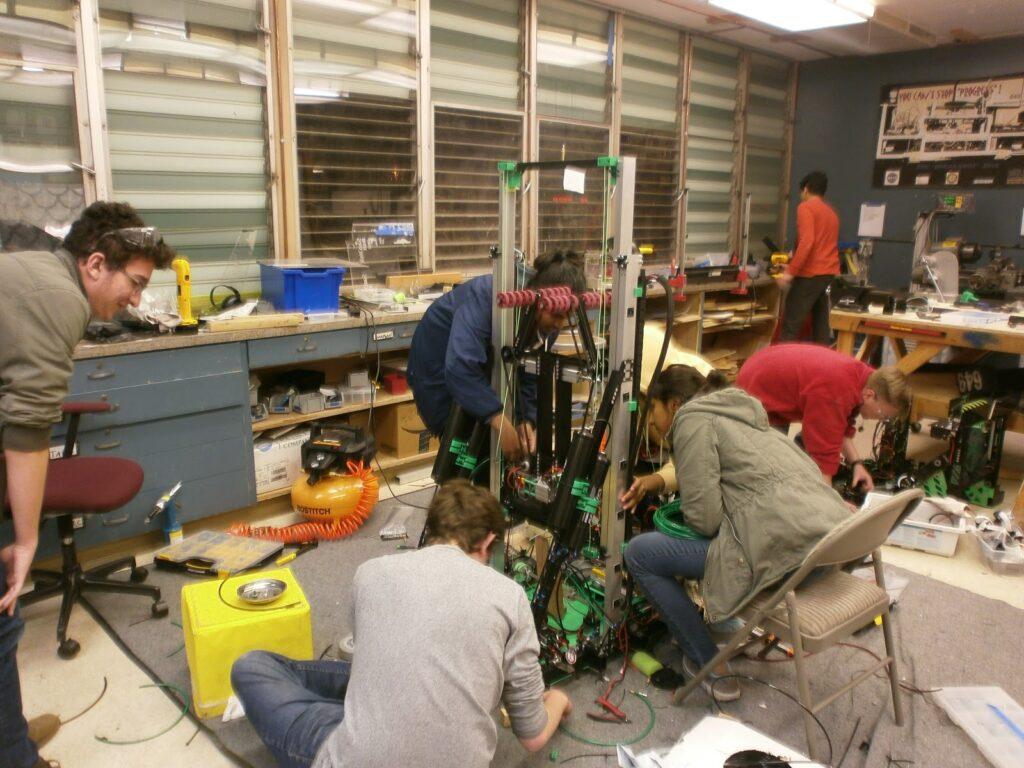Editor’s note: This story was written prior to the suspension of in-class teaching starting in mid-March because of the coronavirus pandemic.
After this year’s robotics season ends, the school will begin modernizing and repurposing the 900 wing to include two science classrooms, according to principal Greg Louie.
If the renovations start in the summer, the classrooms might be available by the start of next year.
In the meantime, the administration is still trying to figure out a new location for the M-SET robotic team during the construction period and beyond.
Talk about renovations has been ongoing since 2015, due to concerns about the wing’s shabby conditions including several water leaks.
“We’ve had the main room where we have all our machines for quite a while. I’ve been in the room since the fifth grade,” senior Mitra Mokhlesi said. “This building is really worn out, so they do need to remodel it, but we do lose a lot of space because of it.”
According to Sheeba Garg, one of the team’s mentors, the plans for renovations to the 900 wing are pending approval from the Division of the State Architect, which is authorized by the architecture department that approves all school construction.
Currently, the administration is looking at possible spaces around campus. District director of capital projects and facilities Tony Palma has met with club mentors to look at possibilities.
With nothing confirmed yet, some proposals include: staying in the 900 wing with a reduced space or combining the S wing and using it as a robotics/engineering lab.
Finding an appropriate location is vital for the club’s continued success. The robotics club hopes for a space equivalent to the FTC and FRC room combined, around 1,250 square feet, so teams can continue to operate in their own designated area, according to Garg.
“We used to have all five teams in the FRC room and there was literally no space to work,” Mokhlesi said. “People would make makeshift tables outside to attempt to build things or carry their parts all the way to the engineering lab to work, walking back and forth to get their tools.”
In 2017, the FTC teams moved to their own room, accessible as long as any parent is available to monitor, where they could store their own tools and have a practice field available.
“It was very cramped in 2016, and honestly it still gets a little cramped in the new room,” said senior Sahaj Rastogi, current co-captain of the 6165 Cuttlefish team which made it to Houston last year. “But having our own table instead of boxes has allowed us to communicate more effectively, be more productive and pursue harder designs.”
Similarly, when the FRC team received its permanent half-field last year, their results at Worlds — which Mokhlesi describes as “completely deserved and not just riding off of someone’s coattails” — reflected the improvement.
While they admittedly had a strong robot, the additional availability of robot driving practice propelled them further in competitions.
“Without a practice field, it will be more difficult,” Mokhlesi said. “We’ll have to go to the quad or borrow rooms, and it’ll mean more time setting up every single day.”
For AP Physics and engineering teacher Matt Welander, who has been an adviser to the club, the 900 wing renovation and getting his own room has been a long time coming.
“It’s a big relief,” Welander said. He started teaching here in 2013 and has been sharing a room ever since.
At times, he described the lack of his own room as a difficult challenge. For instance, despite having a first-period prep, he sometimes has to set up lab experiments at lunch because physics teacher Kirk Davis has a fifth-period class. At the end of each sixth period, Welander has to clean up and remove everything before handing over the room back to Davis the next day.
Welander is excited about the creative control and freedom he will have when he finally gets his own room, though many details of the new arrangement remain to be worked out.





























